12 Lower Trap Exercises for Climbers (Beginner to Expert)
Hooper’s Beta Ep. 81
INTRODUCTION
Pick your favorite and I’ll share mine! This is an addition to last weeks video all about the lower traps. In this video we focus more on a few alternate exercises (with progressions) to lower trap strengthening. That way, you can safely pick an easier starting place and work up from there! Learn to train properly rather than just going as aggressive as you can!
See the exercise list, descriptions, and my recommendations below!
Be sure to check out the full video on the lower traps if you have other questions!
EXERCISE LIST
Supine D2 flexion - no resistance
Supine D2 flexion with band resistance
Supine D2 flexion with band resistance on foam roller
Standing D2 flexion
Prone on table single arm scaption full range
Prone on table single arm scaption full range with weight
Quadruped Shoulder flexion with opposite arm push up plus
Prone flat on ground end range single arm scaption “Y” with weight
Prone end range Y “Superman”
Standing Y with resistance band
Wall Angel
Standing Band Angel
Face pull with overhead press
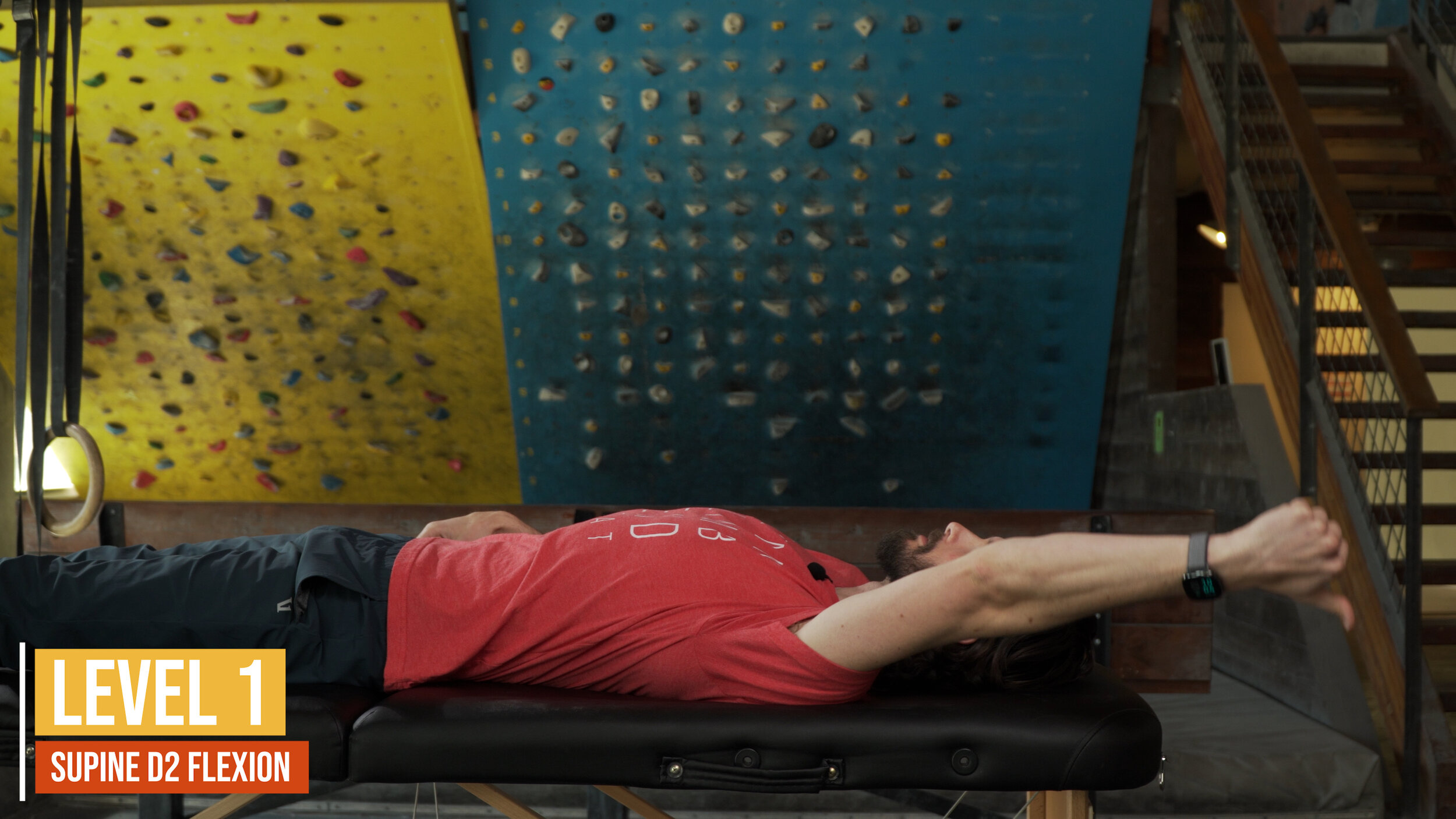
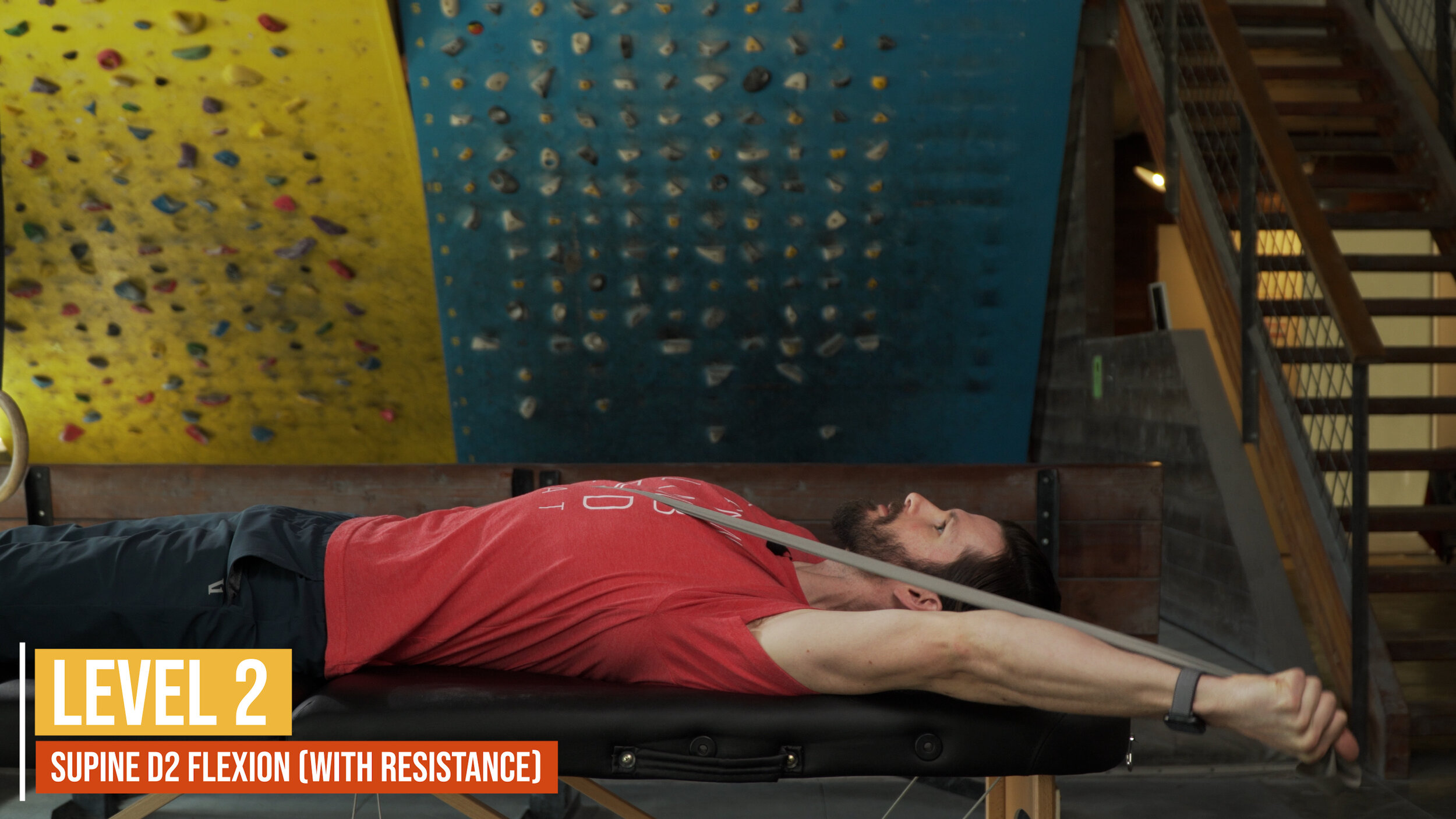
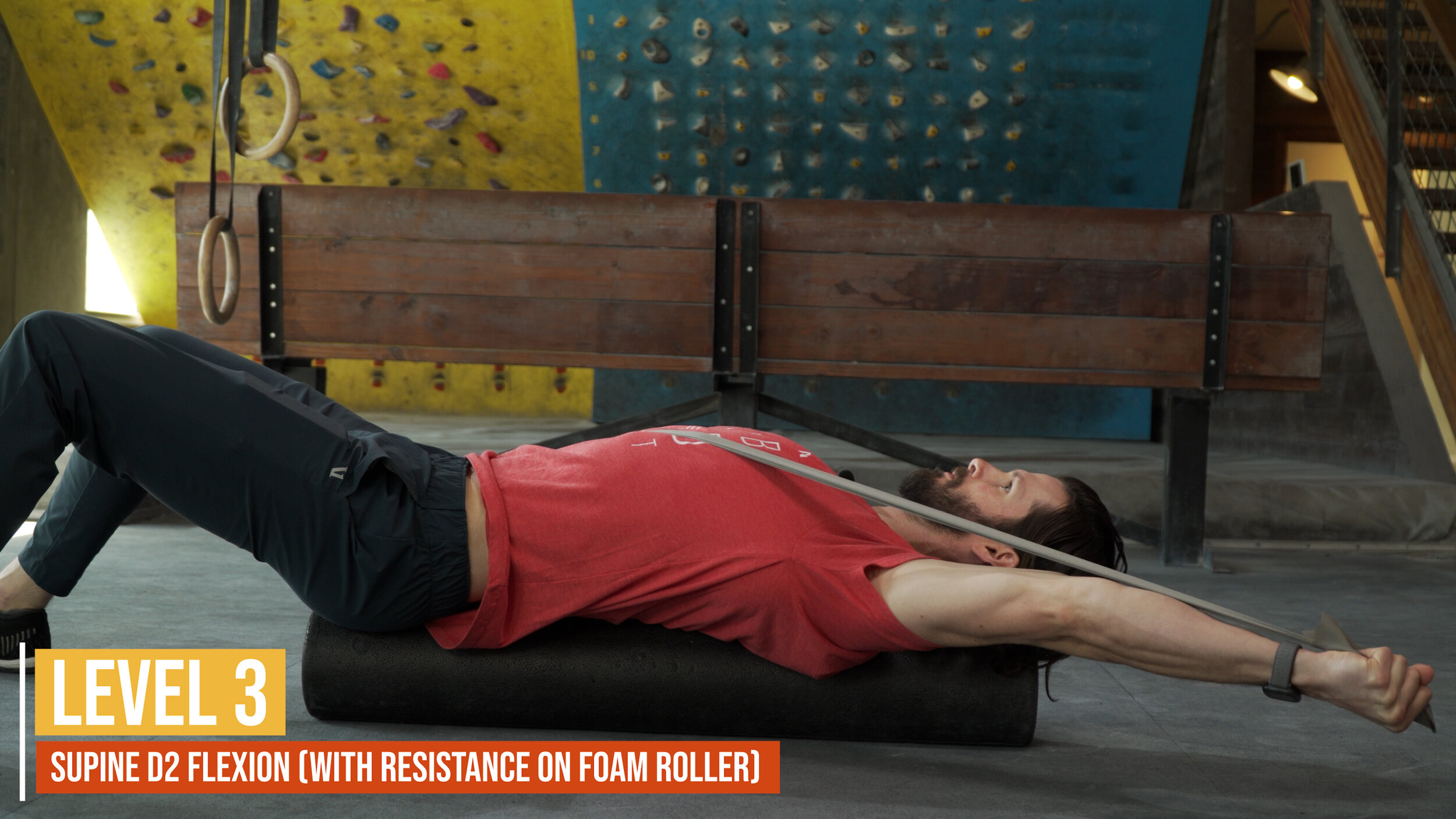
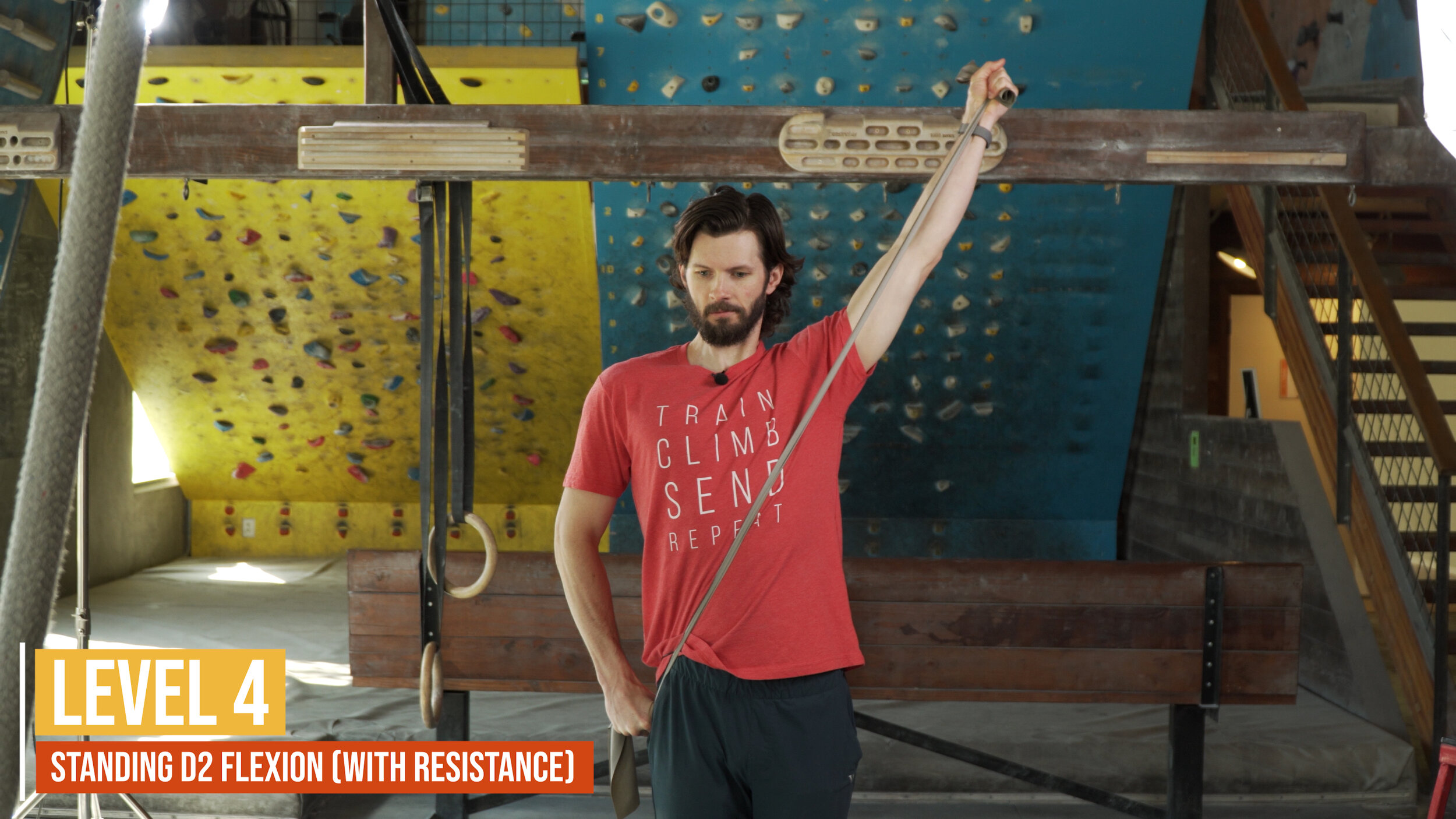
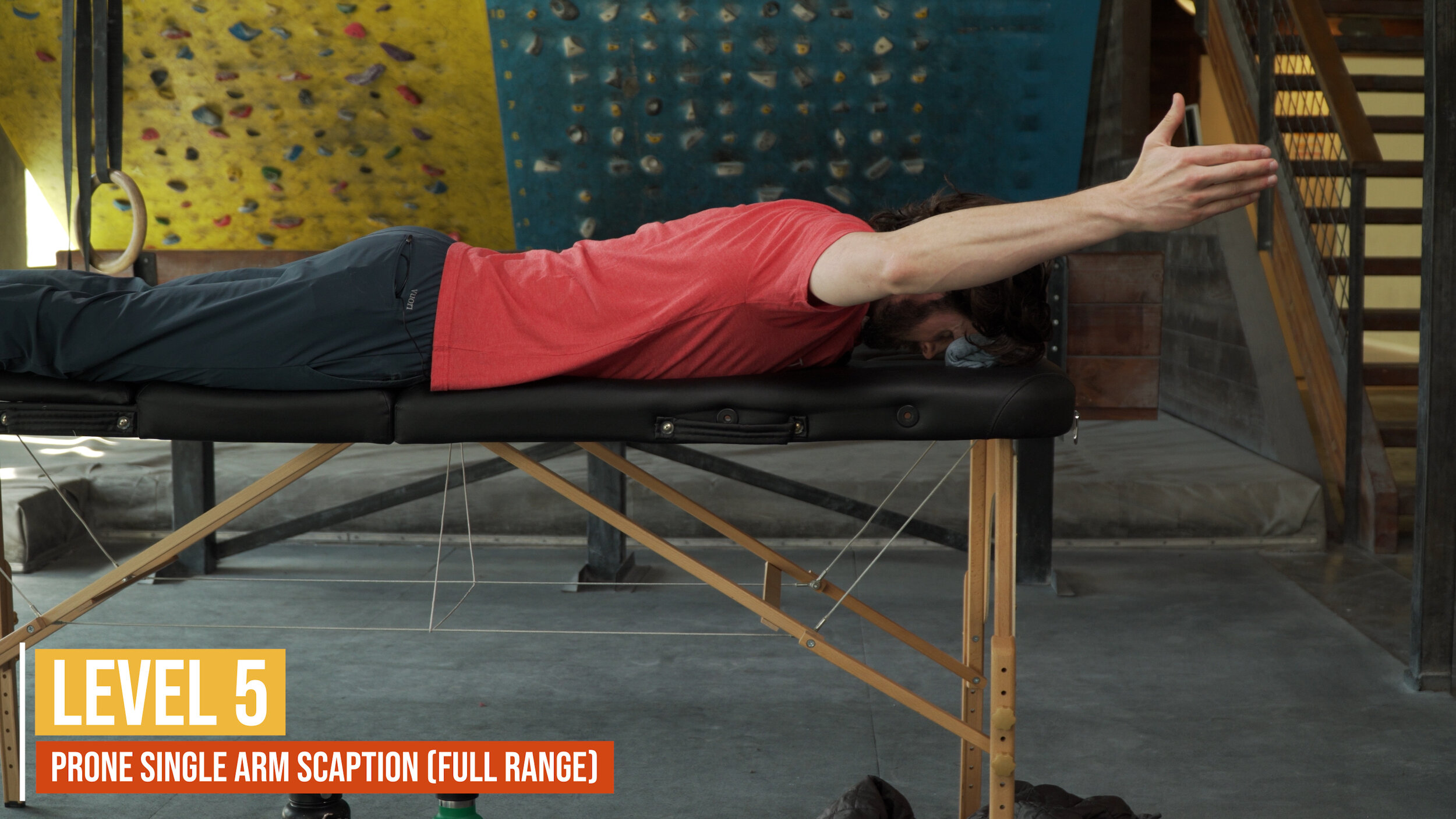

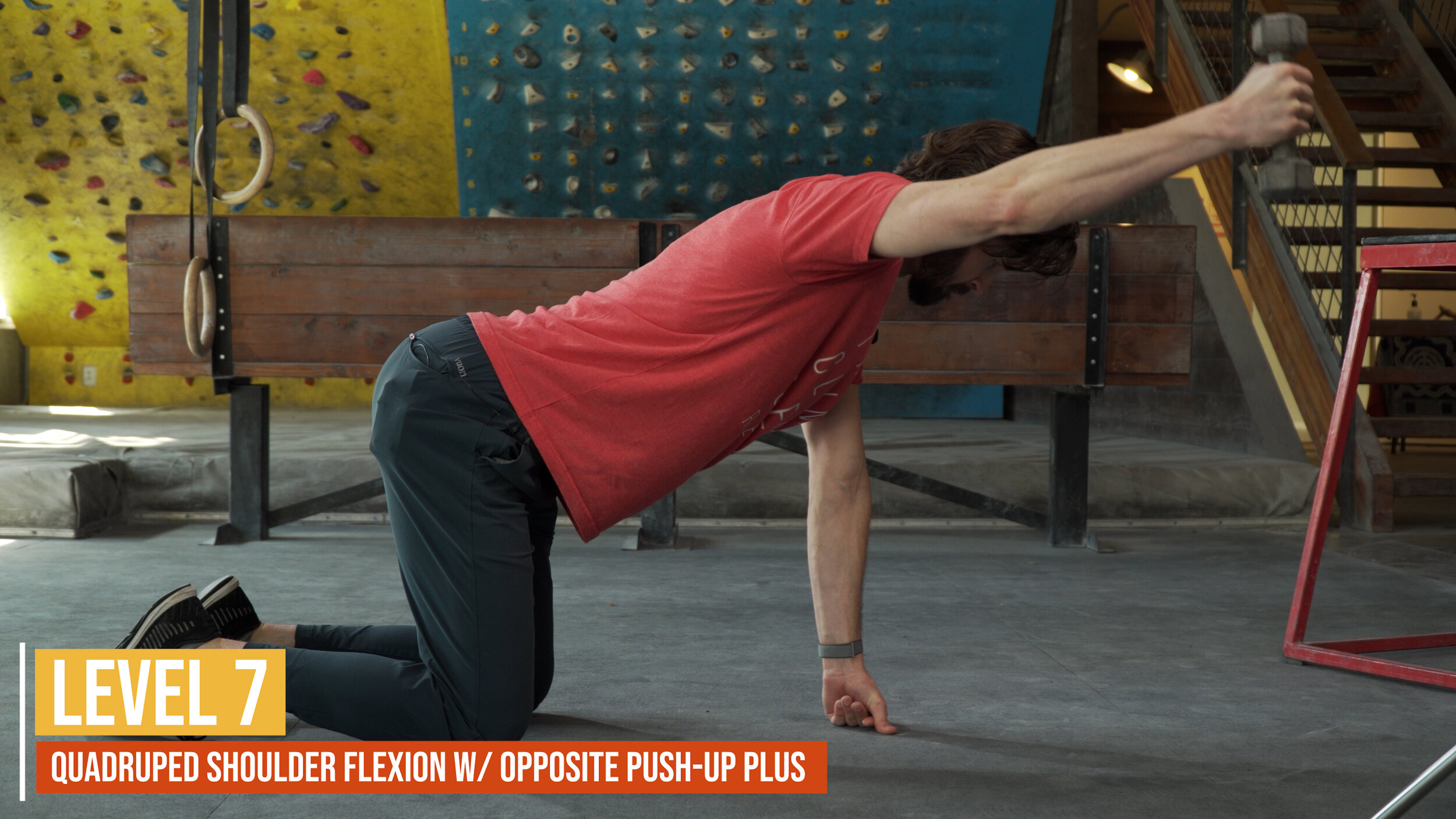
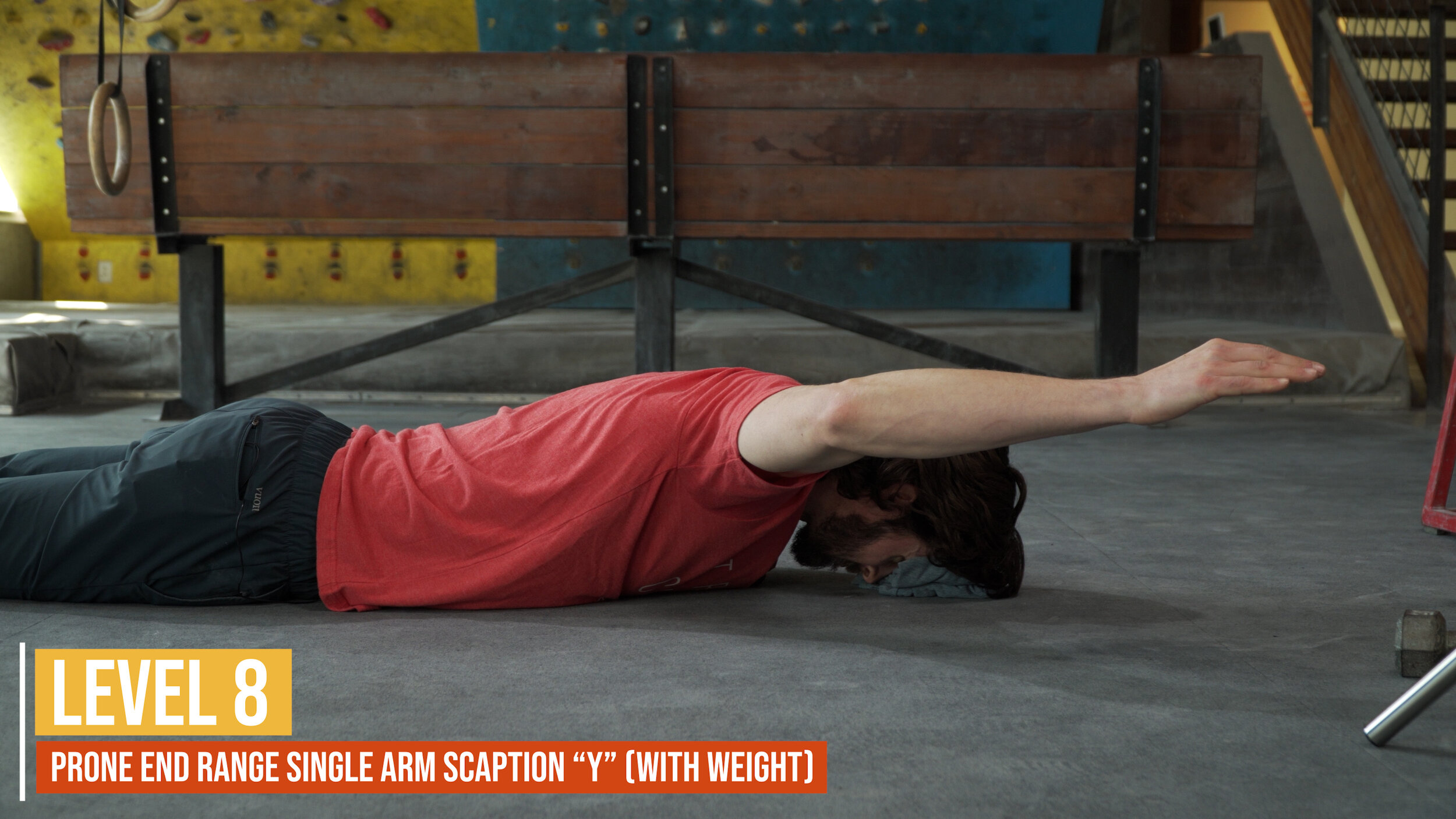
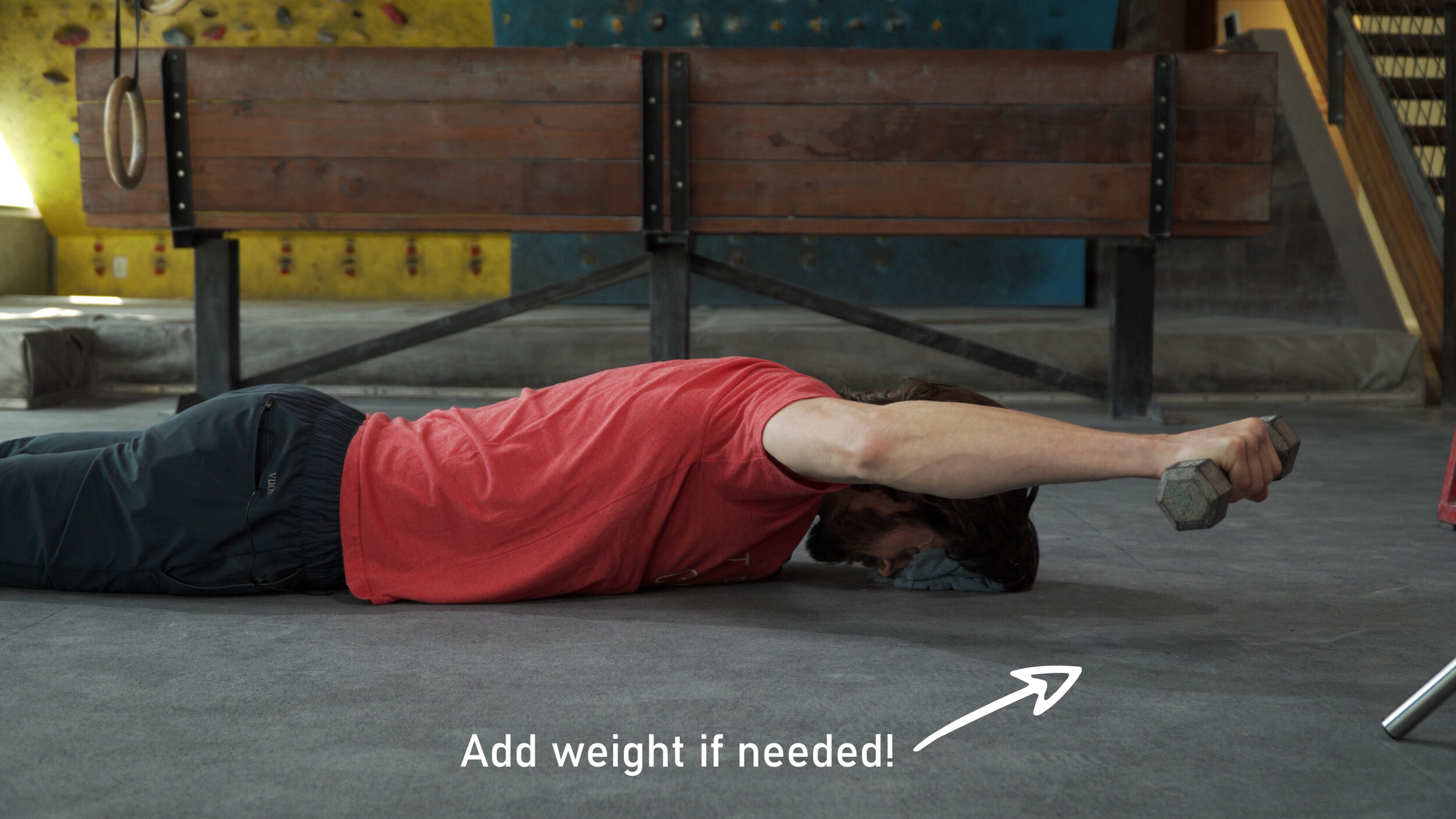
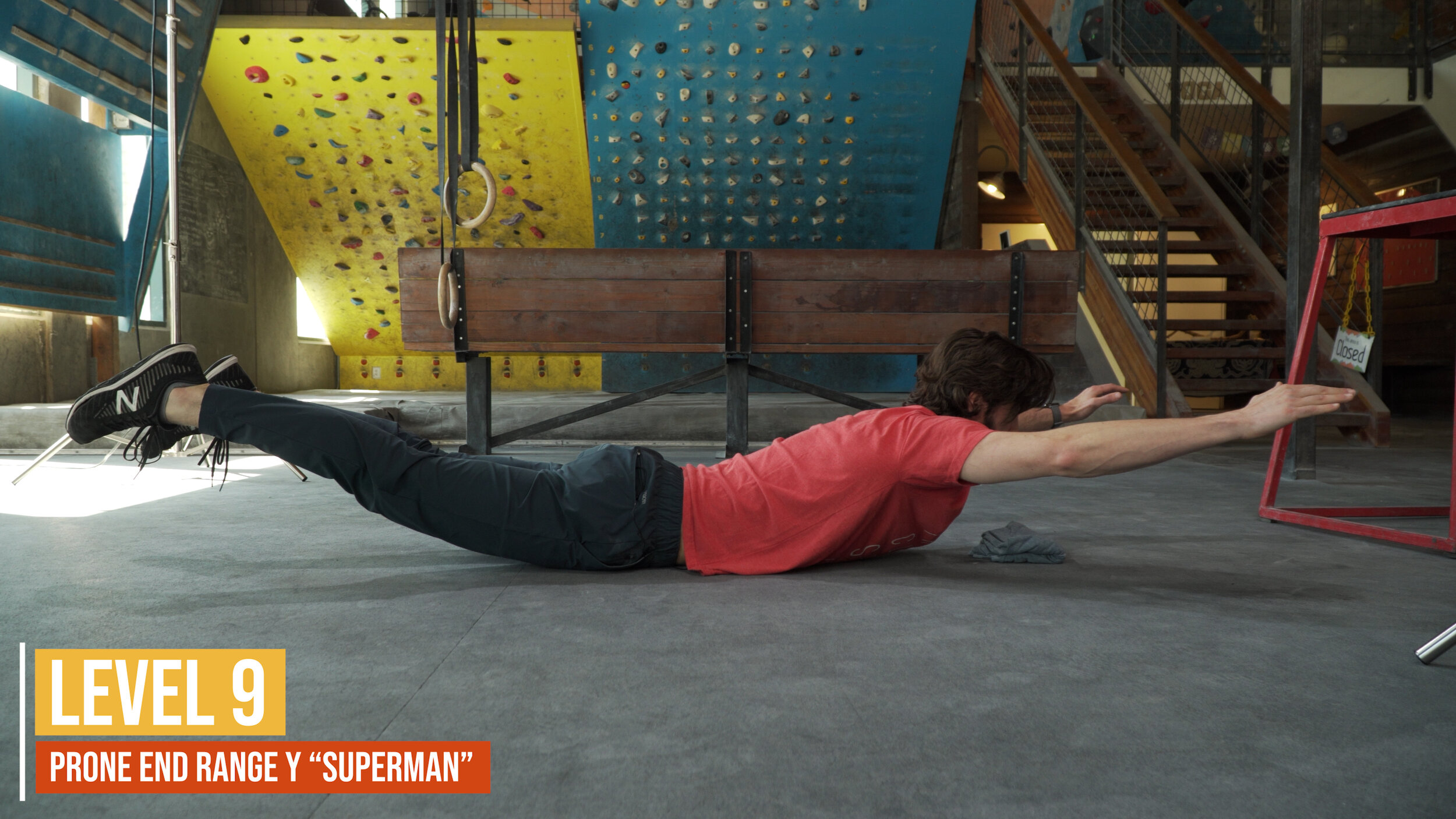
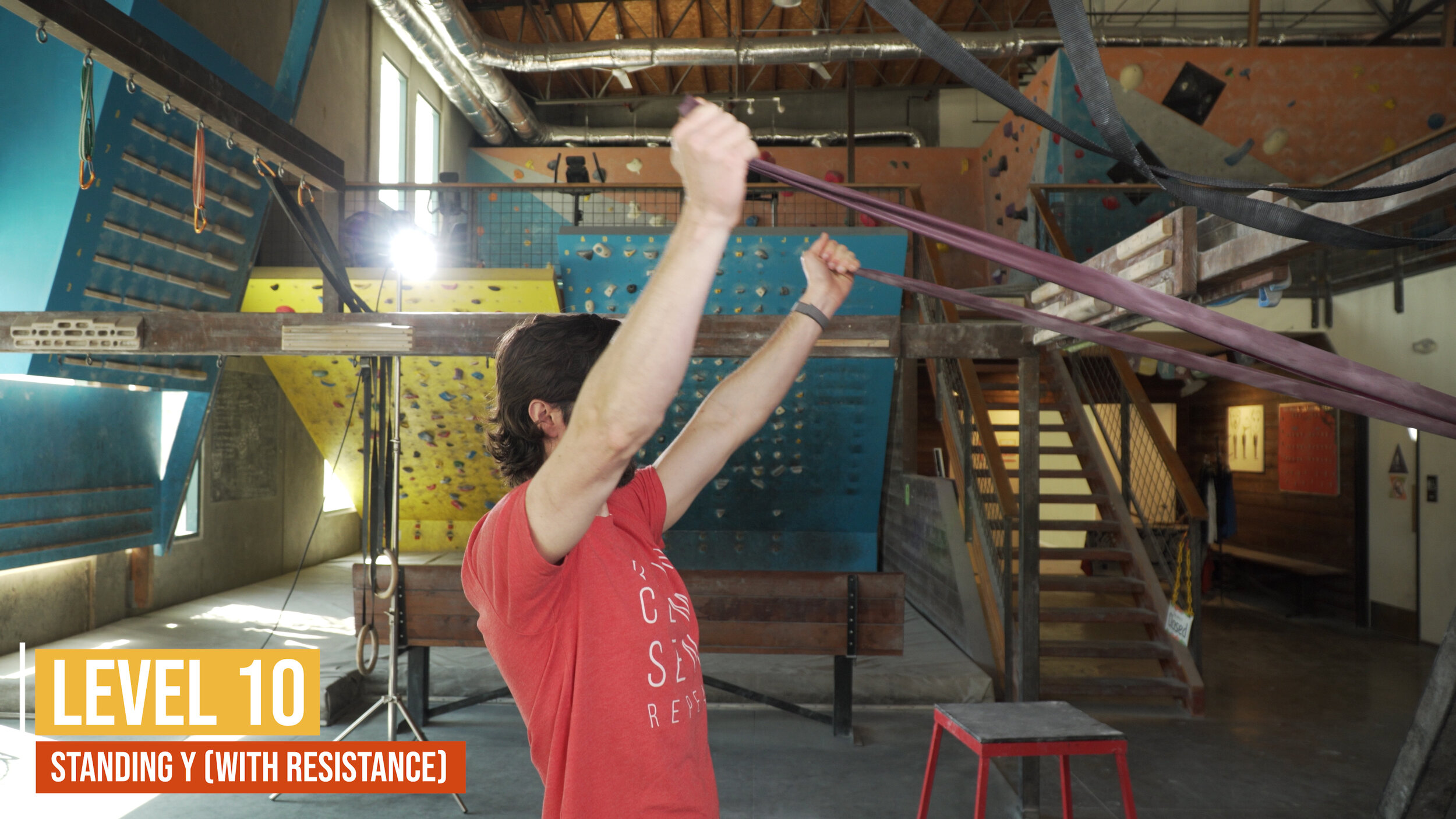

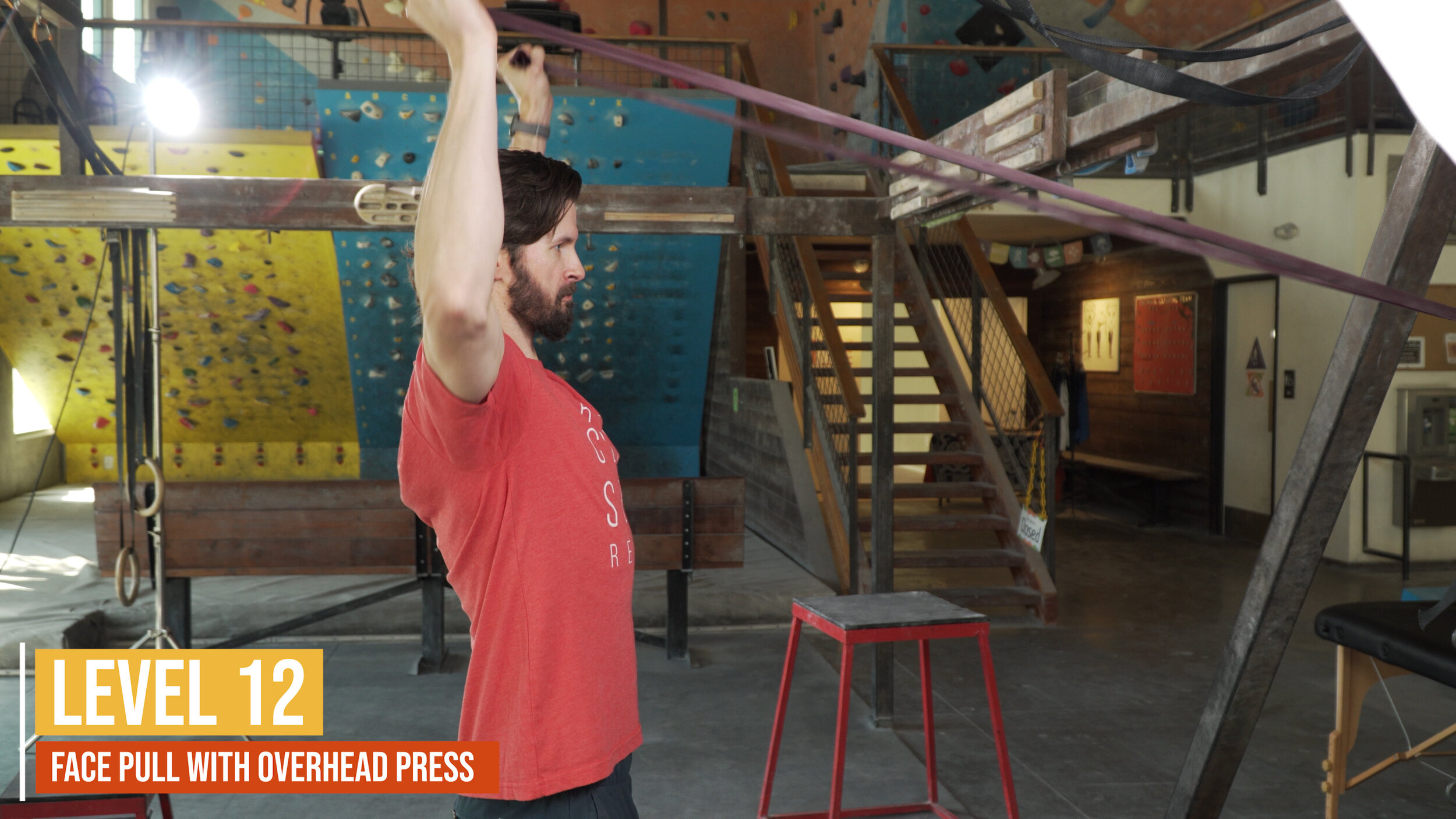
EXERCISE DESCRIPTION
Supine D2 flexion - no resistance - start laying flat on your back. Make a fist with your thumb sticking out. If performing on the left arm, reach the left arm down and across your body towards the right pocket, then, reverse as if “drawing a sword” and raising it overhead. Externally rotate your arm so that the thumb ends up pointing down towards the ground at the end of the movement. Your arm should be in a Y position, or about 8-12 inches away from your head and the end. Repeat.
Supine D2 flexion with band resistance - perform the same motion as above but now hold a resistance band in both hands. Using the same example from before, your right hand will anchor the resistance, the left hand will move.
Supine D2 flexion with band resistance on foam roller - this is the same as above BUT the foam roller acts as a cue. Focus on squeezing the shoulder blade down and squeeze the foam roller to help your engagement.
Standing D2 flexion - this is the same as the supine D2 flexion with band resistance except you are now standing. Caution: this is where upper trap compensations can occur. Make sure to feel this on the inside of the lower aspect of the shoulder blade. This is the lower trapezius muscle.
Prone on table single arm scaption full range - start in the prone position near the edge of your bed or table. A rolled towel here on the forehead helps to protect your nose. Let the arm dangle off the side of the bed. Next, raise the arm up with the thumb pointing towards the sky. You should finish in a Y position. Make sure to squeeze the shoulder blade down and back. You should feel this in the mid and lower trap region, not the top of the shoulder/neck.
Prone on table single arm scaption full range with weight - same as the aforementioned but with weight. This exercise is bolded because of the wonderful activation research has shown for the lower trap. It was rated as the best in one study but did not compare all of the exercises we have listed here.
Quadruped Shoulder flexion with opposite arm push up plus - this is similar to the aforementioned (5 & 6) but you are not on your hands and knees. Keep yourself pushed away from the ground to help engage the serratus anterior of the hand on the ground, while working the lower trap with the hand that is moving. This is bolded due to the fact that it assists the lower trap AND the serratus anterior. Win Win.
Prone flat on ground end range single arm scaption “Y” with weight - same as #5 and #6 BUT you are not just working on the end range movement as you do not let the arm dangle.
Prone end range Y “Superman” - this is a bilateral exercise to work both arms. This is more efficient, but also can be more challenging and limited if you have limitations in your thoracic extension
Standing bilateral Y with resistance band - A standing version of the superman that uses resistance bands instead of gravity. This is helpful as it helps learn the activation of the lower trapezius in standing which is helpful for on the wall activities.
Standing Band Angel - another dynamic activity that will start in the I position, go to the T, and finish in the Y position. This is helpful to train the transition between the rhomboids, middle trap, and lower trap. Start with a resistance band attached in front of you. Grab on to either end (it should be a long resistance band). With the elbows straight and the palm forward (or for an added challenge, rotate the arms so the thumbs point backwards), squeeze the shoulder blades together. Next, while keeping the shoulders back, start to raise the arms overhead as if making a snow angel. Stop if you feel the upper trapezius start to compensate as you raise higher. Lower back down and repeat as tolerable.
Face pull with overhead press - start with a band attached in front of you and both arms straight ahead. Grab the band with both arms. The band should be anchored at chest to head height. Start with your arms extended in front of you. In one motion, pull both arms back to the 90-90 position (90 degrees of shoulder abduction, 90 degrees of elbow flexion) while squeezing the shoulder blades together and moving into external rotation. Your thumbs should be pointed towards each other and at the top of your head. Next, raise the arms overhead until you are in the “Y” position. This is similar to the wall angel but with a resistance band. This is bolded due to its dual positions of the external rotation and the overhead press, both which can help train the lower trap, while also strengthening the external rotators, a win-win.
My Top 3 Recommendations to Include in Your Training
Face Pull with Overhead Press - This is just a mega exercise. Not only does it work the lower trap, but it also works the external rotators, AND it works them in the 90/90 position which is great for climbers. Highly recommend this exercise, BUT, I also recommend it isn’t your first exercise of the day. Make sure you are warmed up before you try this one out.
Quadruped Shoulder flexion with opposite arm press. - Another great exercise if you are specifically trying to work on improving your overhead strength/stability while triggering both the lower trap AND serratus anterior. This also has great EMG research done supporting it. This exercise can be done with little to no weight and you can definitely increase weight as you feel stronger. My only qualm with this is that it is not as functional as the other two I recommend.
D2 Flexion - Finally, the classic, D2 flexion. A solid exercise that is much more mobile. You can do this as part of your warm up for climbing to help work on activation of the trapezius muscle in an overhead position which may improve your stability and awareness in this range. This exercise is not as much for improving strength as much as it is for developing motor control. It is for that reason that I have included it in my top 3.
Disclaimer:
As always, exercises are to be performed assuming your own risk and should not be done if you feel you are at risk for injury. See a medical professional if you have concerns before starting new exercises.
Written and Produced by Jason Hooper (PT, DPT, OCS, SCS, CAFS) and Emile Modesitt
IG: @hoopersbetaofficial